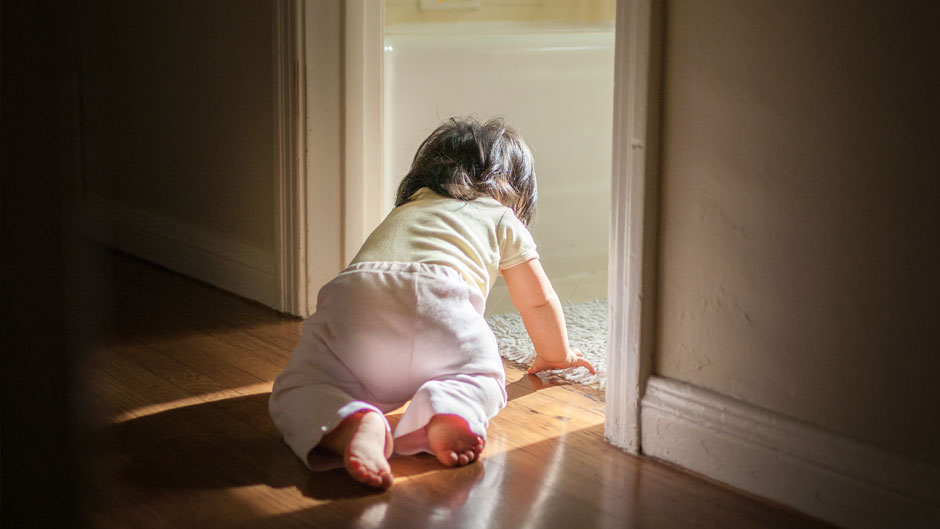Depending on where and how they live, young children who put their hands in their mouths while playing may ingest soil or dust that could imperil their long-term health.
Some studies already have shown that chemicals from pesticides, fertilizers, household cleaners, stain-resistant carpets, or even personal care products like shaving cream, accumulate in the dust that settles on surfaces throughout our homes. But just how much of that dust do children who crawl on the carpet, bang on the coffee table, or play with their toys swallow?
To answer that question, researchers from the University of Miami, North Carolina Agricultural and Technical State University (A&T) and the University of Arizona (UA) are recruiting 100 households for an innovative study to quantify the amount of dust kids inadvertently ingest at home—a missing variable in the risk models used to calculate and reduce exposures to harmful chemicals, such as lead, mercury, asbestos, and polychlorinated biphenyls (PCBs).
“A lot of studies have looked at these contaminants in dust, but we’re focusing on the actual amount of dust because the amount matters,” said Helena Solo-Gabriele, professor of chemical, environmental, and materials engineering, who is leading the effort at the University. “But we don’t have good estimates for how much dust is on surfaces and how much is ingested when children put their hands in their mouths. That’s one of the areas with the most uncertainty in the models.”
To help fill that gap, Solo-Gabriele, A&T’s Alesia Ferguson, and UA’s Paloma Beamer received one of seven grants awarded by the U.S. Environmental Protection Agency to improve the estimates of child exposure to harmful chemicals in dust and soil—and ultimately provide critical information needed to assess the risks and develop effective mitigation and prevention measures.
The researchers, who each bring a special expertise to the $1.35 million study, will use a unique combination of videotaping, dust sampling, and behavior modeling to quantify how much dust winds up on the hands—and in the mouths—of 100 youngsters during their daily home activities. To characterize the variability, research teams from each university will recruit about 33 families with children between 6 months and six years of age in different neighborhoods and communities in their respective regions.
“The dust would vary from home to home and depend a lot on the surrounding area as well,” noted Solo-Gabriele, an expert in designing methods to measure contaminants that could affect human health. “For instance, a residential neighborhood would be different from an industrial neighborhood, which would be different from a farm.”
For this study, she plans to collect dust from the hands of the children, as well as from eight different surfaces that they can touch, and the household vacuum cleaner. Then, using equipment that can detect particles in liquid, she’ll measure the volume by immersing the dust samples in water.
Ferguson, the chair of A&T’s Built Environment Department, is a pioneer in using videotapes to convert human behaviors into mathematical relationships. She plans to mount 360-degree cameras on a handful of ceilings throughout each study home to analyze how often children touch different surfaces and put their hands or other objects in their mouths.
“Contaminants are in the water, in the soil, and in the air, but if we don’t know how many times children drink that water, or touch that soil, we don’t have any idea of their true exposure,” Ferguson said. “You have to know their behaviors to understand how they get exposed and that’s the missing link.”
Beamer, associate professor of environmental health sciences in UA’s College of Public Health, will use the information from her collaborators to develop the computational model that simulates the behavior of the children and determines their exposure or risks to chemical contaminants in the dust.
“Ultimately, our goal is to better understand why children get certain diseases, but this is just one step in that process,” Solo-Gabriele said. “We won’t answer that question. Others will, but it’s a progression, so we are contributing to the eventual answer.”
Three years ago, she and Ferguson collaborated on a study that determined how much sand children accumulate on their skin while playing at the beach. Funded by a grant that examined the long-term environmental impact of the 2010 Deepwater Horizon oil spill in the Gulf of Mexico, that study documented the play patterns of 100 children at four beaches in metropolitan Miami-Dade County and Galveston, Texas—none of which had been contaminated by oil. It, too, employed videotaping and behavioral tracking software.
But Solo-Gabriele’s interest in investigating—and mitigating—childhood environmental risks actually began decades ago, when she helped determine that children who played on jungle gyms or sat at picnic tables made from preservative-treated wood came away with arsenic on their hands—a finding that eventually led to the 2004 ban against arsenic-treated wood in residential applications.

